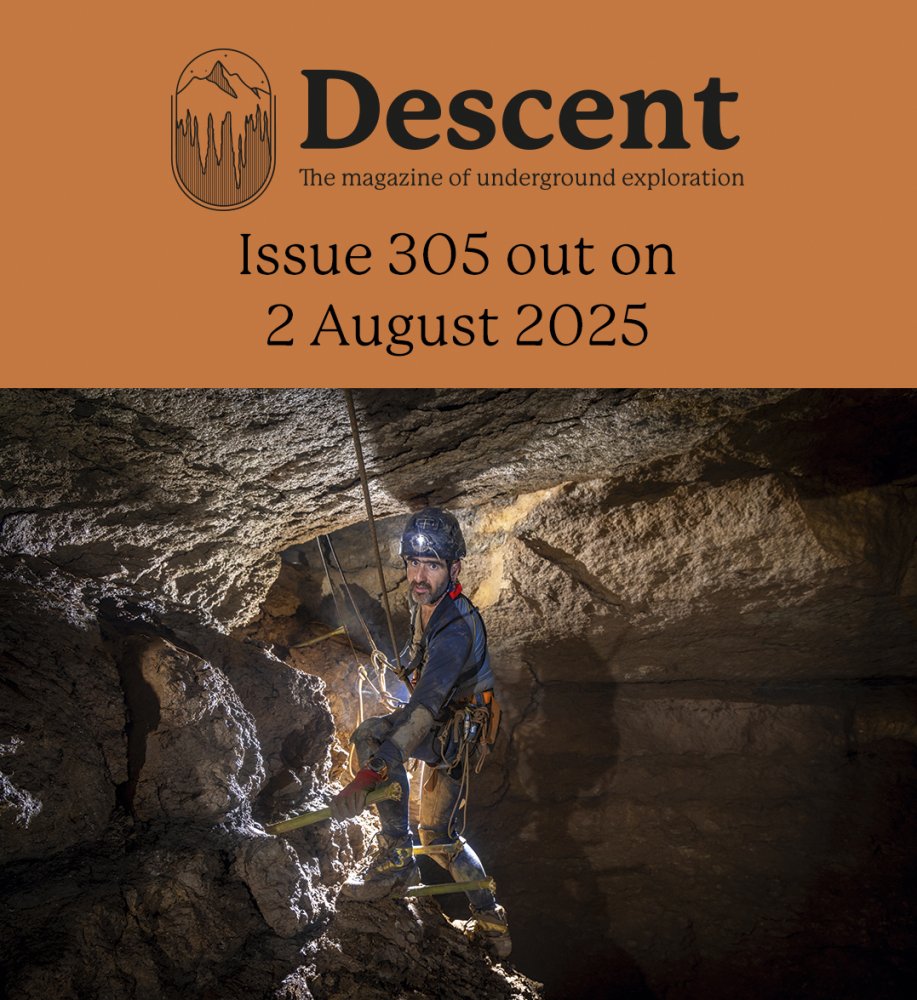We agree that all CNCC-installed anchors should
usually be depicted on an associated topo.
There may be a few exceptions, e.g. Dr Bannisters Handbasin in Long Churn, where a CNCC anchor provides a handline belay (along with backup around the large boulder), but an entire topo just for that might be deemed 'excessive' and just a verbal mention in our accompanying route description is probably sufficient.
With the Upper Trident climb/pitch in County Pot, the installers of these anchors performed this work to replace some poor condition spits on this increasingly popular route. However, as there was no County Pot topo to add these too, they were never reported on a topo, however, they are detailed in our route description instead as a compromise.
Another example is Valley Entrance Roof Tunnel; At the time these anchors were installers there would have been no Valley Entrance topo and it would have hardly seemed worth a dedicated topo for one 7m pitch. Just a mention in descriptions/guidebooks has always been sufficient.
(There is now a topo for Valley Entrance Toyland route, so this could be adapted to also show or mention the Roof Tunnel Pitch).
We don't really know why a County Pot topo was never published in days gone by; we guess because there are so few pitches, which are all short and separated (and many cavers choosing to ladder the County first pitch too), that the feeling was that just detailing them in a route description/guidebook was sufficient here too. We don't really have a stance on whether this was a right or wrong decision.
However, we are pleased to say that a topo for County Pot is now in preparation and will be published soon (thanks Ian) 
Regarding the Dome Alternative in Lost Johns' Cave, we are not familiar enough with these anchors to draw a topo without someone going to inspect this (similarly, the Acrobat Series in Notts Pot, and the P-anchors throughout Dale Head Pot, which appear to be CNCC anchors but we have no topo for). It may be that the installers simply undertook these projects without ever getting round to drawing up an associated topo. We strongly encourage installers to do this, but we cannot force anyone, and of course, the anchor scheme has been around for about 30 years now during which time numerous installers have come and gone.
Broadly, these are minority situations, and the number of
completely new topos we have published
just in the last four years following work by our installer team speaks volumes to our committment to publish topos for the anchors we install:
- Valley Entrance Toyland
- Growling Hole
- Broken Finger Pot
- Newby Moss Cave
- Mayday Hole
- Scanty Lardos Pot
- Curtain Pot
- Pasture Gill Pot
- F'ing Hopeless Pot
- Five Ways Pot
Not to mention numerous updates to existing topos following anchor replacements or additions.
As has been mentioned above, if you see any anchors which appear to be CNCC (i.e. stainless steel resin bonded P-type or IC-type) which are not on a topo, and you think they should be, then let us know using the above reporting forms. Likewise, if you spot any topo errors, let us know. The size of our region, and the enormous number of anchors we have installed over the last 30 years means we rely on your help to bring these things to our attention so that we can ask our volunteers to then go and check these things out.
Andrew, thank you for reporting these via the official channels, you should have email replies to both of your reports




